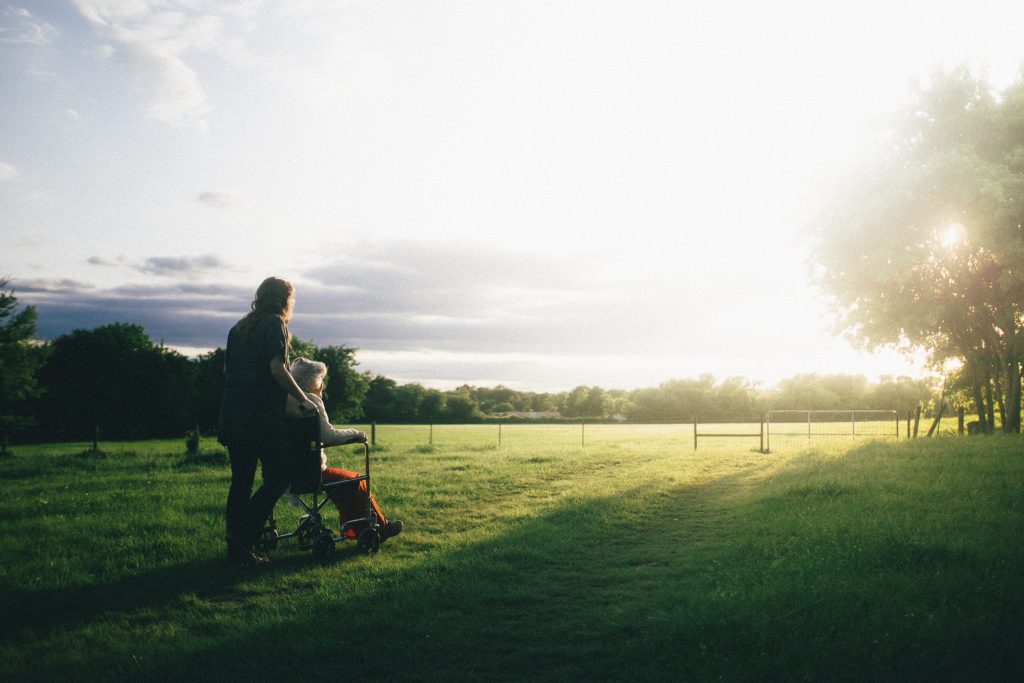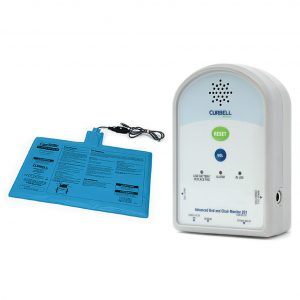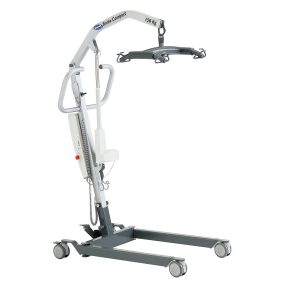
Appreciating fall prevention best practice guidelines is a subject that caregivers need to take extremely seriously.
“Falls in the home for those over the age of 65 are unfortunately very common, with around 1 in 4 adults falling and injuring themselves every year. These falls can often lead to significant injuries, trips to Emergency rooms and in extreme cases, surgery – The most frustrating aspect of this issue is that it is entirely preventable” – Deirdre O’Flynn, O’Flynn Medical.
Knowing how to prevent slips, trips and falls can nonetheless be challenging. This primarily arises from the fact that different individuals are associated with different risk levels. Not all caregivers are aware of the tools and prevention methods at their disposal which, in certain situations, can be life saving. The team at O’Flynn Medical got in touch with experts in home care, home design and doctors from across the world and asked them their best practices for preventing falls in the home.
Fall Prevention Systems
Firstly, there are a number of practical approaches which can be taken within the home or a professional care environment.
“Removing clutter, rugs, eliminating height differences in the flooring and making sure there is adequate light in a home make it so much safer!” – Dr. Allison Capps, Belle Therapy & Wellness.
Ensuring that areas are properly illuminated can help to avoid slips and trips. Providing elderly individuals with the correct shoes and cleaning up any clutter are other essential steps to take. It is also recommended to provide certain systems such as grab rails within areas that are more likely to witness falls, including stairwells and bathrooms.
“The home should be well lit, and throw rugs are not recommended. Having safety devices within the home are important in case of a fall or an emergency” – Heidi Royter, COO, Solterra Senior Living
“One often overlooked trip hazard is flooring transitions, where one type of flooring meets another (example: the transition between a bathroom and hallway). Minimizing or eliminating a raised transition strip is a great start, and for people with degraded vision, these two surfaces would ideally be well illuminated and visually similar in colour and lightness. When adjacent flooring materials have high visual contrast, they can be perceived as a change in height, even though the surfaces are flat. This misperception can result in a fall just as problematic as one caused on a flight of stairs.” – Matt Finn, Architect & Founder, Cognitive Design
Professional caregivers should likewise instruct those under their supervision to avoid loose clothing, as these may also pose a tripping or falling hazard. This approach can be further reinforced by installing non-slip flooring surfaces. There are many items available that can dramatically decrease accidents and the installation processes are generally straightforward.
- Staircases and stairway accidents are the second leading cause of accidental injuries — second only to motor vehicle accidents.
- Each year 12,000 people die from stairway accidental deaths — many of them seniors.
How to Help? – “Place a strip of colourful duct tape on the edges of stair steps to make it easier for seniors to judge the depth and distance to keep from tripping and falling. Place strips of puffy plastic shelf liner on stair handrails to increase grip and reduce slip risk.” Lori Yount, VP of Operations, CareBuilders at Home
Fall Prevention Care Plans
Prevention is essential, especially in this scenario. Many elderly individuals are often taking some form of medication depending on their circumstances. Some of these substances can cause side effects such as dizziness and vertigo. Always consult your doctor in order to better appreciate the associated risks. Regarding over-the-counter medicines, certain chemicals, such as some ingredients found within antihistamines, can likewise lead to drowsiness and blurred vision. Understanding these potential hazards will aid in the supervision process. There may also be times when it is better to switch to a different prescription so that unwanted symptoms can be avoided.
“Talk to your pharmacist to discuss medication side effects that might increase your risk for falls” – Carlin Longley, Registered Nurse, LowKeyDad.com

Proactivity is also very important; particularly if the individual will be left alone for periods. Personal medical alert systems, such as an alarm band that can be attached to the wrist and activated, when necessary, will contact the authorities in the event of an accident.
“Most falls result in some bruises but people do suffer broken bones. Each year, about 300,000 people are hospitalized for hip fractures, more than three-quarters of them women” – Teri Dreher, RN, NShore Patient Advocates.
Regular medical examinations are also hugely advisable, especially when it comes to eyesight and hearing. Unfortunately, some elderly patients may not realise that a problem exists if it is allowed to develop over months or even years. Therefore, most professionals recommend scheduling a routine examination at least once every six months. In addition to these tips, here are some other practices and guidelines for fall prevention:
- Create a list of all medical conditions and/or medications that can be provided to a doctor in the event of a fall.
- Record the details of previous incidents, as these will often be used to develop even more targeted care strategies.
- Install a bed fall-prevention crash mat. If the individual falls out, the chances of injury will be dramatically reduced.
“A big reason as to why an elderly person might fall is because they are trying to access something that might be out of reach, or is far from where they tend to sit. It helps to keep a cordless phone close by to where they like to spend the most time, as well as some snacks, a blanket and pillow and the TV remote. Having these things in the same area and close by, will help to keep them in one particular area, making it less likely for them to fall. It also helps to keep many items at eye level, and to not store food or tupperware in the highest cabinets in the kitchen. If these items are out of reach, a person might try to use a step stool or chair to access them which can lead to injury.” – Mike Hoaglin, MD, Dr House
Elderly Fall Prevention Devices
Falls can’t always be prevented, which means you’ll need an effective fall management system, take the CURBELL Fall Management System for example. This device has monitors and sensors that make reducing falls and minimising injuries much easier. This device is simple to use for both staff and carers and makes their duties easier and patients more comfortable. To avoid any potential false alarms, the device has a delay control for when a patient momentarily moves off the sensor pad, as well as an easy access reset button. The monitors on this device also allow connection to a nurse call system, a call cord for increased notification capabilities and AC power. 
CURBELL Fall Management SystemFor everyday activities and movement, there is a whole host of options available to ensure safety. For instance, a heavy-duty rollator will enable the elderly to transport everyday items such as groceries while simultaneously providing extra support when walking. A mechanical reaching aid can also be useful around the home when accessing items that might be dangerous to grab due to a loss of balance.
A hospital bed is another essential piece of equipment to have in a nursing home or when caring for a loved one. These specific profiling hospital beds can help reduce the danger of falls, providing the ultimate level of support and comfort. The Ook Snow Medical Bed is one of the safest available options when it comes to preventing falls in a hospital setting –
“We purchased a Ook Snow Falls Management bed for one of our residents who was a falls risk due to decreasing mobility and a decline in cognitive function .We have found it to be very beneficial .It has a built in alarm system to indicate that the resident is getting up. It prevented the use of bed rails for this particular resident.” – DON Mt Alvernia Hospital, Mallow, Co Cork

For those interested in an option more suited to the home/nursing home environment, O’Flynn Medical also offers an ultra-low, profiling floor bed which significantly reduces the risk of falls.
These elderly fall prevention devices have all been proven highly effective and they can help to avert possibly serious consequences. However, it is also important to consult with a trained medical professional to better determine which systems are the most appropriate for your needs. Let’s also remember that elderly individuals should be informed about how these systems work so that they are used correctly. Fortunately, the team here at O’Flynn Medical will always be happy to address any questions that you may have.
Being Prepared for Any Eventuality
Understanding the best practices and guidelines for fall prevention involves intuition, foresight, and an appreciation of the options at your disposal. The good news is that medical technology has come a long way in recent years. While traditional devices such as walking sticks are certainly useful, we can now make life safer and more comfortable for those with mobility issues.
However, creating a go-to plan in the event of a slip or a fall is just as crucial. What types of physical risks are present? Might a fall exacerbate a current medical condition? Which emergency services should be notified? What are some of the ways that caregivers can eliminate hazards around the home or facility? These and similar questions will provide the insight required to make informed choices at the appropriate times. They can also shorten response times; an important factor in terms of receiving treatment as soon as possible.
Let’s also remember that fall prevention might not always involve an elderly individual. For example, those who are recovering from surgery at any age may require mobility assistance such as the temporary use of a wheelchair, which can be used for a short term through our wheelchair rental service. A person hoist and stand aids are another great option of equipment to use to help prevent falls in the home. They can be used to help a patient get in and out of bed, bath or wheelchair safely and comfortably. They are very useful for anyone who has temporary or permanent mobility issues due to injury after a fall.
These relatively short-term situations can be catered to by the rental services offered by O’Flynn Medical.
Putting it All Together
Believe it or not, it is estimated that up to 30 per cent of all falls can be avoided with the proper intervention and preparation. This is critical when we consider how many individuals suffer injuries every year.
Contact Us Today
From devices intended to provide assisted mobility to systems that can be permanently installed within a home, there are many options at your disposal. If you or someone you care for requires additional help, don’t hesitate to contact us today for more advice for fall prevention best practice guidelines. We also encourage you to have a closer look at our range of medical equipment to understand the unique advantages of each. The best practices and guidelines for fall prevention are easy to adopt if we take advantage of the effective strategies highlighted throughout this article.



